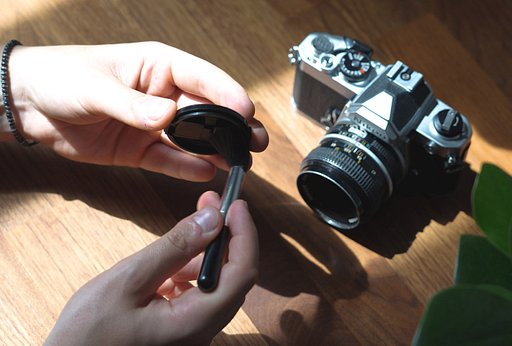Inspecting and Understanding Your Negatives
1 11 Share TweetThe clock is ticking, seconds and minutes are floating away from one inversion to the next. You are thinking about your contrast, shadows and highlights, and it's already time to fix and wash carefully, as you don't want to leave any undesired marks. The time has come for you to open your tank: will or will it not be a successful development?
Once your negatives are well dried, it is time to give them a closer look and formulate a diagnosis, to determine what kind of print we can or cannot produce. This is a critical step that will be of great help in the darkroom. Also, it is worth considering that a negative that might look lost could still be printed with a little bit of shrewdness.
Most commonly, the ways you can miss out on your negatives happens either during shooting by over or under exposing, or while in the darkroom by under or over developing your negatives. Besides other hitches that can occur when self developing (we have explored some topics before), here are the combinations of errors:
Going Under:
-
Underdeveloped and underexposed
Density very low, contrast is much too low, absence in shadow details, highlights are much too weak. -
Underexpose, properly developed
Overall density too low, contrast is too high, lacking shadow details, highlights are too weak. -
Underexposed, overdeveloped
Density appears normal, contrast is much too high, shadow details are too weak, highlights are too dense and black.
When You (Almost) Got Everything Right:
-
Correctly exposed, underdeveloped
Density is too low, contrast is too low, shadow details are presents but thin, highlight are too weak. -
Correctly exposed and developed
Density is normal, contrast is normal, shadow details are normal, highlights are strong but transparent. -
Correctly exposed, overdeveloped
Density is too high, contrast is higher then desired, shadow details are strong, highlights are very black and dense.
Going Over:
-
Overexposed, underdeveloped
Density is almost normal, contrast is too low, shadow details very strong, highlights are too weak. -
Overexposed, normally developed
Density is too high, contrast is too low, shadow details are very strong, highlights is too dense. -
Overexposed, and overdeveloped
Density is extremely high, contrast is looks normal, shadow details is far too strong, highlights are extremely black and lacking details.
Look For Shadows And Highlights
The first thing we want to look for are the shadows. When they are lacking in detail usually it means they are underexposed, thus you'll have a clear film base. Correct shadows will have plenty of details, with just a few small clear areas. On the other hand, when there are hardly any areas where a clear film can be seen, it's an overexposed frame.
The highlights must retain as much information as possible to be able to see even the tiniest of details. They must be dark enough or it's a sign that the development did not run its proper time. However, there is always the opposite risk. If the highlights are too dark, the emulsion is too dense, thus the negative was overdeveloped.
Keep in mind that when you choose to increase exposure it will also increase the negative density for shadows and highlights. While altering time when developing will result in denser highlights but will have a less strong effect on the shadows.
To briefly touch on some general considerations about printing your negatives, we want to give some basic advice. Choose your paper wisely based on your negatives. Generally, to print a sharp image it's best to set your enlarger aperture to at least f8 or more.
Secondly, the filters you will add to boost or control your contrast will also need to be taken into consideration. Most of all, the first test strip will give a general direction of where your time of exposure should be. From there, the filter for contrast control, plus dodging and burning will lead the road to a well printed picture.
Did you find this information useful? Have you ever inspected your negatives in preparation for making prints? Share your experience below.
written by eparrino on 2022-12-22 #tutorials #negatives #exposure #darkroom #self-development #darkroom-print #inspect-the-negatives

























One Comment